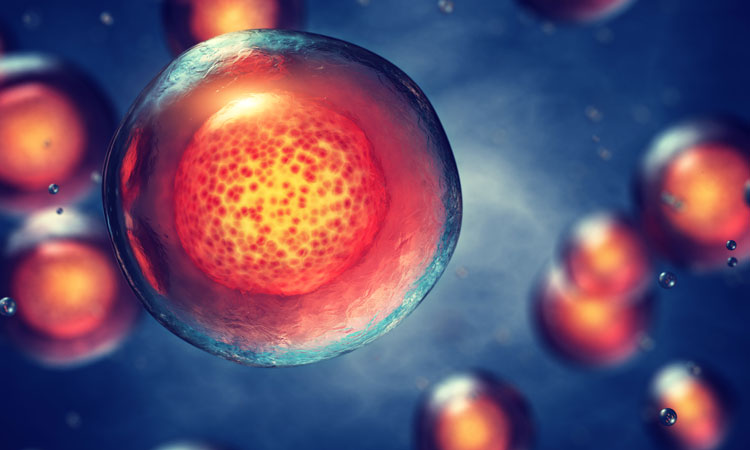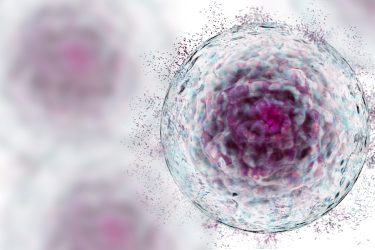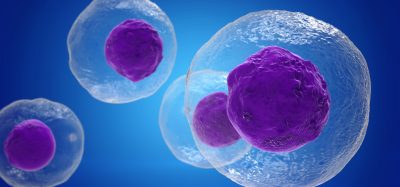Transcriptional reprogramming rescues vascular fate of misidentified pluripotent cell‑derived epithelial cells
Posted: 22 June 2021 | Dr Raphaël Lis (Weill Cornell Medicine) | No comments yet
A team of scientists has found that a type of cell derived from human stem cells and widely used for brain research and drug development may have been leading researchers astray for years. Here, Dr Raphaël Lis from Weill Cornell Medicine explains how forcing the activity of three known endothelial cell transcription factors can enable researchers to re-programme these cells into becoming much more like endothelial cells.


In a new study, researchers have discovered that cells generated from human pluripotent stem cells (hPSCs), using a widely-accepted lab protocol, more closely resemble epithelial cells rather than the blood-brain barrier (BBB) endothelial cells (ECs) they were initially described to be. However, the introduction of key endothelial cell transcription factors can imbue a canonical and functional vascular endothelial identity to these misidentified epithelial cells.
A focus on hPSCs
hPSCs have been used to generate various tissue-specific cell types in vitro over the past decade. Researchers can achieve this mainly by differentiating the pluripotent cells along specific developmental pathways towards the target cell type. When using cells derived from hPSCs, a thorough characterisation of cellular identity is crucial due to the fact that differences between hPSC-derived cells and their primary counterparts in native tissues can have significant impacts on the efficacy of the in vitro models in which they are used. Some studies report that a target cell type has been achieved based on select functional assays and a restricted analysis of gene expression profiles, which only allows for limited comparisons to be made to the native cell.
In our recent work,1 we aimed to better characterise the cellular identity of hPSC-derived Brain Microvascular Endothelial Cells (iBMECs) which were previously shown to possess BBB traits2 and largely adopted as the primary cell type used in many in vitro BBB models. These cells were initially reported to be a reliable hPSC-derived model for human BBB studies including disease modelling and drug screening. They displayed characteristics such as high barrier electrical resistance, cell transporter activity and select vascular cell surface markers. However, it remained unclear how similar these cells were to bona fide BBB-forming ECs in the human brain or other hPSC-derived ECs.
When using hPSC-derived cells, a rigorous characterisation of cellular identity is essential”
We performed a comprehensive meta-analysis comparing RNA sequencing data shared by many groups from around the world with our own, including multiple endothelial and epithelial cell type controls. This analysis revealed that all cell samples produced from this long-standing protocol, as well as its derivations,3,4 correlate with a high degree of confidence – meaning that the cells we generated were the same as those previously reported in the literature. Our analysis of these global transcriptomes also demonstrated that iBMECs mainly express genes commonly associated with epithelial cells rather than BBB-forming ECs as previously described.
We validated these results with single-cell RNA sequencing as well as more traditional wet lab assays which came together to show that not only did these cells lack an endothelial phenotype, but they also could not mimic endothelial functions such as vessel formation or respond in an endothelial fashion to certain stimuli. When stimulated with inflammatory factors, iBMECs were shown to not express and mobilise E-selectin to the cell membrane as ECs would. These cells were also shown to be unresponsive to various vascular permeabilising agents when compared to control ECs. With these results, we concluded that iBMECs were unsuitable for use in a vascular BBB model and were definitively harbouring an epithelial cell identity.
Adjusting transcription factors
Our group previously showed that lineage committed epithelial cells could be reprogrammed towards a vascular endothelial lineage by transcription factor-mediated reprogramming.5 The use of ETV2, ERG and FLI1 (EEF) was proven to induce stable endothelial gene expression in committed epithelial cells while also suppressing the expression of epithelial genes. When this method of cellular reprogramming is applied to iBMECs, we report that the global transcriptional profile of the reprogrammed cells (rECs) was comparable to other hPSC-derived ECs, as well as adult ECs. Although the cells could not form a barrier with high electrical resistance or express certain organotypic brain EC markers, we showed that these rECs could functionally recapitulate endothelial responses to inflammatory signalling as well as vessel formation.


Our results demonstrate rECs to be phenotypically and functionally endothelial. However, we believe much more work needs to be done to achieve brain-specific ECs derived from hPSCs that are suitable for human BBB modelling in vitro. In a recent peer-reviewed perspective,6 we note the possibility for de novo generation of organotypic ECs from hPSCs requiring a combination of environmental queues and transcription factor overexpression. More specifically, transduction of certain transcription factors to ECs have been shown to increase barrier tightness as well as electrical resistance.7 Introduction of various neural cell types in vitro or small molecule chemokines have been revealed to affect the permeability and barrier phenotypes in generic ECs as well.8-12
Regardless of the methodology, when using hPSC-derived cells, a rigorous characterisation of cellular identity is essential for the development of accurate in vitro models and efficacious cellular therapies.
About the author
Dr Raphaël Lis is Assistant Professor of Reproductive Medicine in Medicine and a member of the Ansary Stem Cell Institute in the Division of Regenerative Medicine at Weill Cornell Medicine.
References
- Lu, T. M., Houghton, S., Magdeldin, T., et al. Pluripotent stem cell-derived epithelium misidentified as brain microvascular endothelium requires ETS factors to acquire vascular fate. Proceedings of the National Academy of Sciences 118, e2016950118, doi:10.1073/pnas.2016950118 (2021).
- Lippmann, E. S., Azarin, S. M., Kay, J. E., et al. Derivation of blood-brain barrier endothelial cells from human pluripotent stem cells. Nature Biotechnology 30, 783, doi:10.1038/nbt.2247 https://www.nature.com/articles/nbt.2247#supplementary-information (2012).
- Lippmann, E. S., Al-Ahmad, A., Azarin, S. et al. A retinoic acid-enhanced, multicellular human blood-brain barrier model derived from stem cell sources. Scientific Reports 4, 4160, doi:10.1038/srep04160 (2014).
- Hollmann, E. K., Bailey, A. K., Potharazu, A. V., et al. Accelerated differentiation of human induced pluripotent stem cells to blood–brain barrier endothelial cells. Fluids and Barriers of the CNS 14, 9, doi:10.1186/s12987-017-0059-0 (2017).
- Ginsberg, M., James, D., Ding, B.-S., et al. Efficient direct reprogramming of mature amniotic cells into endothelial cells by ETS factors and TGFβ suppression. Cell 151, 559-575, doi:10.1016/j.cell.2012.09.032 (2012).
- Lu, T. M., Barcia Durán, J. G., Houghton, et al. Human Induced Pluripotent Stem Cell-Derived Brain Endothelial Cells: Current Controversies. Frontiers in Physiology 12, doi:10.3389/fphys.2021.642812 (2021).
- Roudnicky, F., Kim, B. K., Lan, Y., et al. Identification of a combination of transcription factors that synergistically increases endothelial cell barrier resistance. Scientific Reports 10, 3886, doi:10.1038/s41598-020-60688-x (2020).
- de Vries, H. E., Blom-Roosemalen, M. C., van Oosten, M., et al. The influence of cytokines on the integrity of the blood-brain barrier in vitro. J Neuroimmunol 64, 37-43, doi:10.1016/0165-5728(95)00148-4 (1996).
- Siddharthan, V., Kim, Y. V., Liu, S. & Kim, K. S. Human astrocytes/astrocyte-conditioned medium and shear stress enhance the barrier properties of human brain microvascular endothelial cells. Brain Research 1147, 39-50, doi:https://doi.org/10.1016/j.brainres.2007.02.029 (2007).
- Puech, C., Hodin, S., Forest, V., He, Z., et al. Assessment of HBEC-5i endothelial cell line cultivated in astrocyte conditioned medium as a human blood-brain barrier model for ABC drug transport studies. International Journal of Pharmaceutics 551, 281-289, doi:https://doi.org/10.1016/j.ijpharm.2018.09.040 (2018).
- Schulze, C., Smales, C., Rubin, L. L. & Staddon, J. M. Lysophosphatidic Acid Increases Tight Junction Permeability in Cultured Brain Endothelial Cells. Journal of Neurochemistry 68, 991-1000, doi:https://doi.org/10.1046/j.1471-4159.1997.68030991.x (1997).
- Roudnicky, F., Zhang, J. D., Kim, B. K., et al. Inducers of the endothelial cell barrier identified through chemogenomic screening in genome-edited hPSC-endothelial cells. Proceedings of the National Academy of Sciences 117, 19854, doi:10.1073/pnas.1911532117 (2020).
Related topics
Assays, Induced Pluripotent Stem Cells (iPSCs), Screening, Stem Cells, Translational Science
Related organisations
Bit Bio








